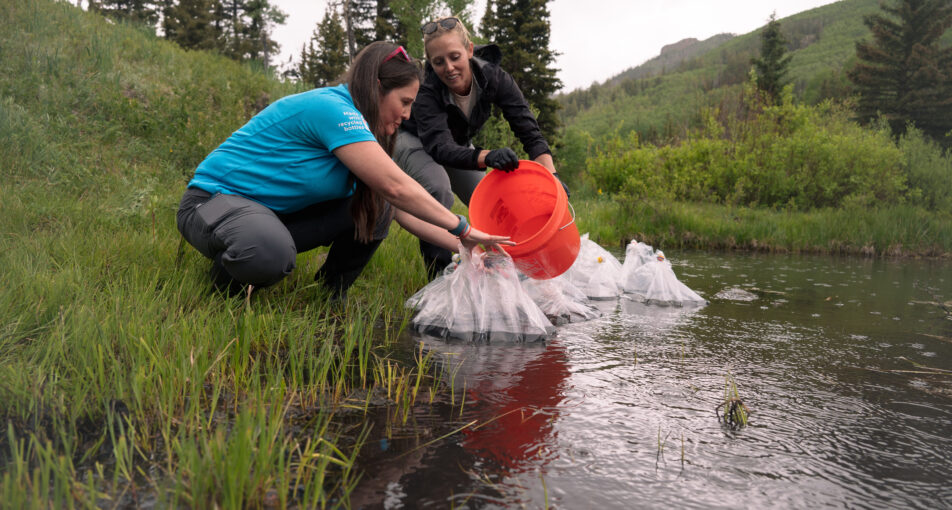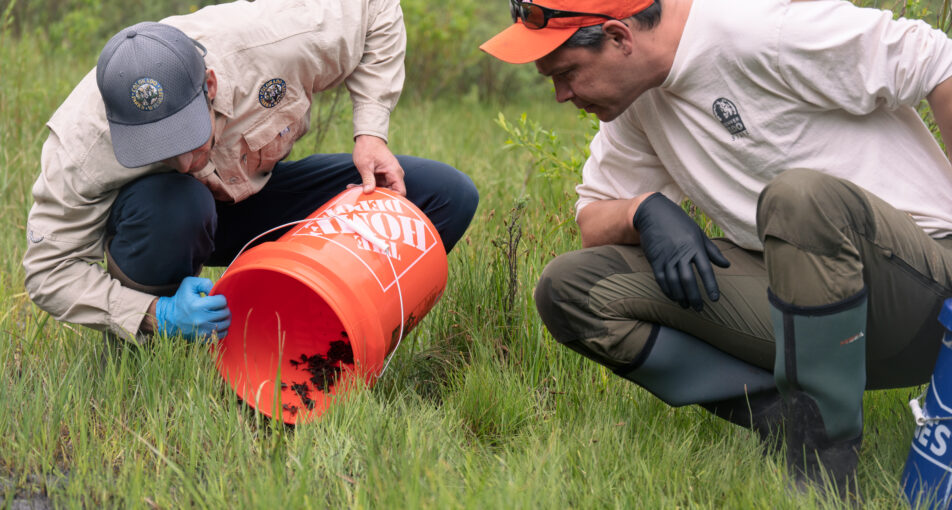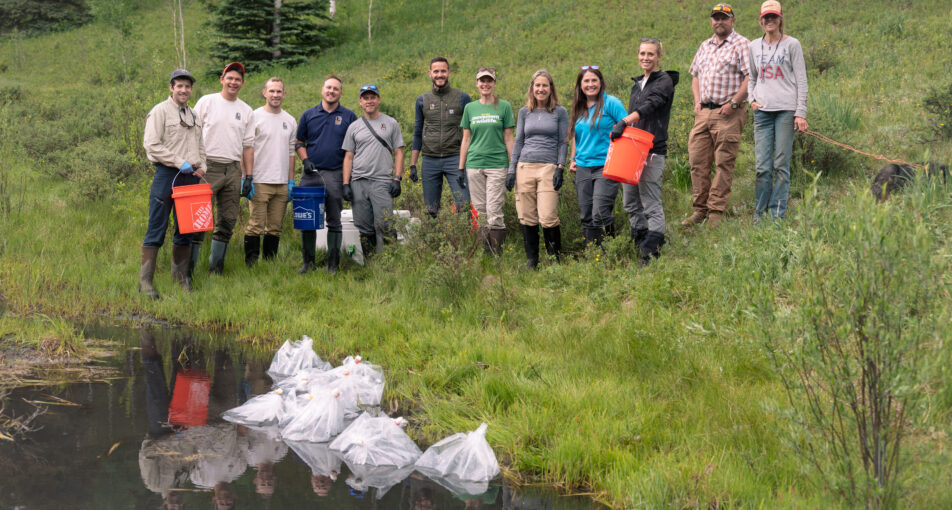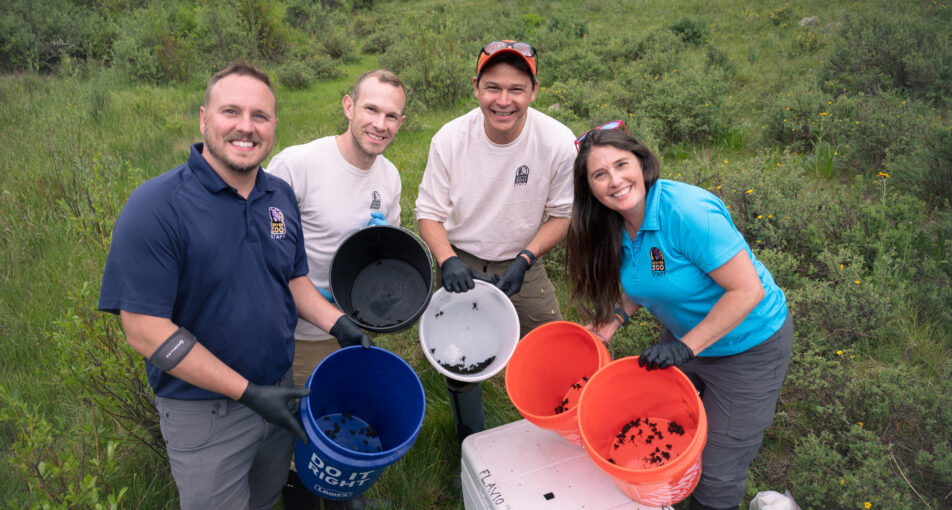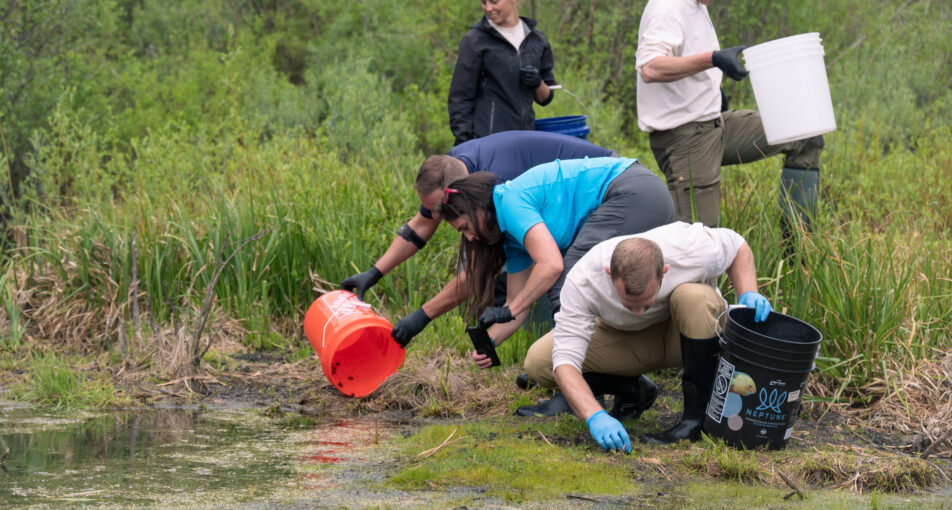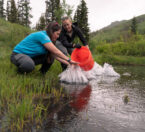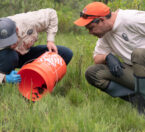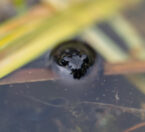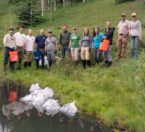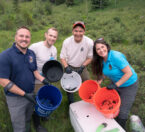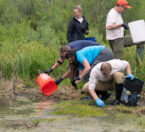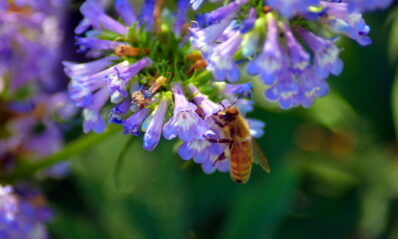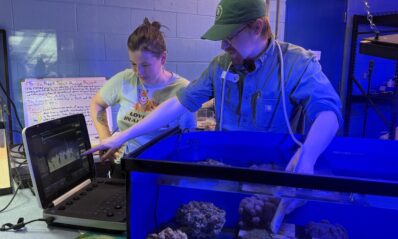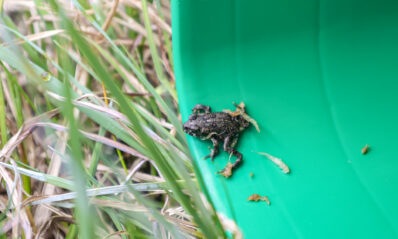
En 2021, lanzamos un nueva iniciativa destinada a potenciar la población de sapos boreales del estado, una especie catalogada como en peligro de extinción en Colorado y Nuevo México, en colaboración con Colorado Parks and Wildlife (CPW). Comenzando con 95 sapos adultos de CPW Instalación de restauración de especies acuáticas nativas En Alamosa, nuestros expertos en anfibios pasaron más de seis meses preparándolos para reproducirse y criar a sus crías antes de su liberación en la naturaleza.
Y el 20 de junio, equipos de ambas organizaciones viajaron a humedales cerca de Creede, Colorado, para liberar más de 2200 renacuajos de sapos boreales que, con suerte, albergarán una población establecida de anfibios raros. Esta fue la segunda reproducción y liberación exitosa, incluida la reintroducción de más de 600 renacuajos en el Bosque Nacional Gunnison en 2022.
Oficina Principal de Conservación de la DZCA
El sapo boreal, que alguna vez fue común en hábitats montanos entre 8,000 y 12,000 pies en las Montañas Rocosas del Sur, ha experimentado una dramática disminución de su población en las últimas dos décadas. La disminución parece estar relacionada con la pérdida de hábitat y principalmente con la infección por el hongo quitridio, que puede infectar a la mayoría de las 7.000 especies de anfibios del mundo y está vinculado a importantes disminuciones y extinciones de poblaciones a nivel mundial. Las autoridades estiman que pueden quedar tan solo 800 sapos adultos salvajes en Colorado.
"Fue un día muy especial para unirnos a nuestros socios de la Alianza para la Conservación del Zoológico de Denver para liberar renacuajos de sapos boreales que DZCA produjo en sus instalaciones", dijo Daniel Cammack, biólogo de especies acuáticas nativas de la región suroeste de CPW. “La propagación constante de sapos boreales en cautiverio ha sido el principal eslabón perdido en nuestros esfuerzos de conservación. En el pasado, dependíamos únicamente de la recolección de huevos fertilizados de poblaciones silvestres para convertirlos en renacuajos en el criadero y almacenarlos en los sitios de translocación. Gracias a su experiencia y trabajo duro, podemos aumentar nuestra capacidad y sacar más sapos en más lugares. Esta es una asociación fundamental que esperamos se traduzca en un aumento de las poblaciones de este anfibio único en todo nuestro estado”.
Llevamos más de 18 años conservando especies de anfibios en peligro de extinción y en peligro crítico. En 2018, DZCA se convirtió en el primer zoológico del hemisferio norte en criar con éxito ranas del lago Titicaca en peligro crítico y desde entonces ha proporcionado más de 250 ranas sanas a zoológicos y acuarios en Estados Unidos y Europa. En 2021, criamos con éxito ranas doradas panameñas en peligro crítico de extinción como parte del Plan de Supervivencia de Especies de la Asociación de Zoológicos y Acuarios. Y en 2022, DZCA y CPW liberaron la primera cría (más de 600 renacuajos) de la iniciativa conjunta para apoyar a los sapos boreales en un humedal remoto en el Bosque Nacional Gunnison.
CPW ha dedicado importantes recursos durante más de 30 años a investigación del sapo boreal y continúa explorando formas de recuperar la especie. Específicamente, los investigadores de CPW se enfocan en desarrollar metodologías para reintroducir sapos en hábitats históricamente ocupados, detectar hongos quitridios en la naturaleza, marcar e identificar sapos individuales y mejorar el éxito de reproducción en el Centro de Restauración de Especies Acuáticas Nativas, que desempeña un papel fundamental en los esfuerzos del estado. para restaurar las poblaciones de sapos boreales.
Estimamos que se necesitarán muchos años para que la especie vuelva a un nivel seguro en las Montañas Rocosas del Sur, y esperamos que la colaboración sea un programa de varios años. Puedes ayudar uniéndote a nuestro Equipo de conservación del sapo boreal donde monitoreará el hábitat de la especie en las tierras altas para ayudarnos a comprender la salud de las poblaciones actuales y determinar ubicaciones adecuadas para la futura reintroducción de sapos criados en el campus de DZCA en Denver.
